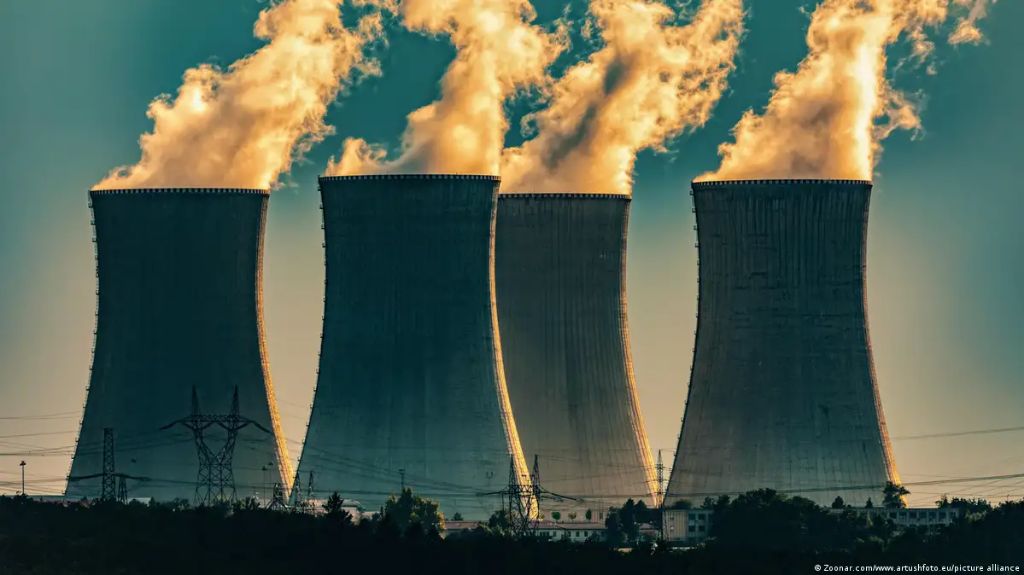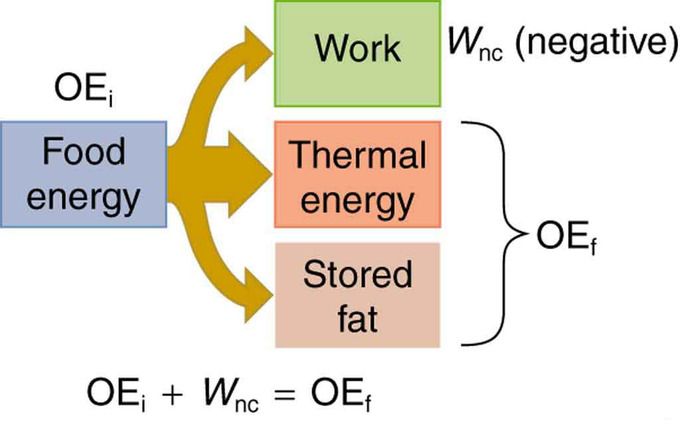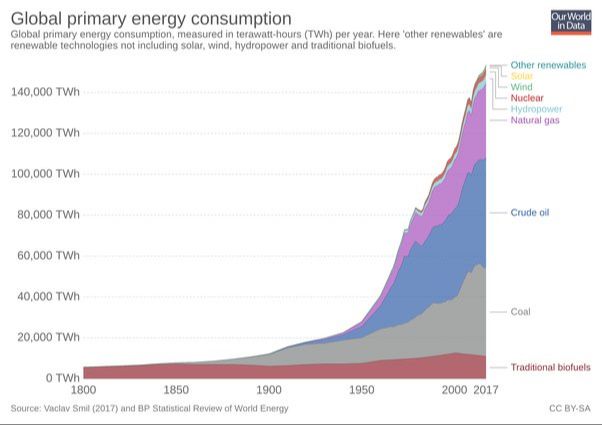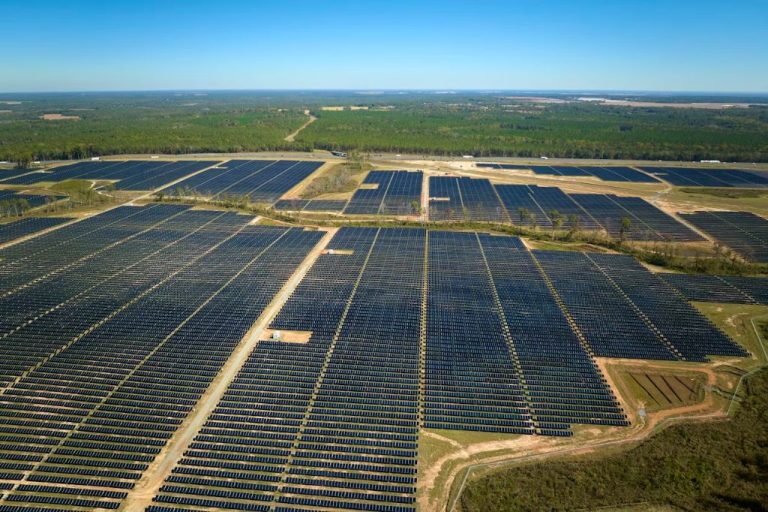What Is The Source Of Most Of The Energy?
Energy is essential to modern civilization. It powers our homes, businesses, transportation, and communication networks. The source of energy is important because different sources have different economic, environmental, and geopolitical impacts.
The world’s energy needs are massive and growing. In 2020, total global energy consumption was estimated at around 600 quadrillion BTUs (British Thermal Units). Fossil fuels like oil, coal, and natural gas make up about 80% of the world’s energy supply. However, renewable sources like solar, wind, hydroelectric, geothermal and biomass are growing quickly as countries shift towards cleaner energy.
This article will examine the major sources of energy in the world today, their shares of the total mix, their pros and cons, and the outlook for the future as the world transitions to a more sustainable energy system.
The Sun
The Sun is the original source of most of the energy on Earth. The Sun generates energy through nuclear fusion, converting hydrogen into helium at its extremely hot core. This nuclear fusion process releases enormous amounts of energy in the form of photons, which make up sunlight. The Sun has shone for over 4.5 billion years and will continue to radiate energy for billions of years more.
The sunlight that reaches Earth provides the energy that powers many critical processes on our planet. Photosynthesis in plants converts solar energy into chemical energy. This solar-derived chemical energy then passes through the food chain, providing energy for all life. The uneven heating of Earth’s surface by the Sun drives wind circulation and ocean currents. Sunlight also provides the energy that allows water to undergo evaporation and precipitation, forming the water cycle that shapes climates and weather.
In summary, the nuclear fusion reactions within the Sun produce sunlight, which is the original source of nearly all energy on Earth. Sunlight powers photosynthesis, drives wind and ocean currents, and enables the water cycle. Without the steady stream of energy released by our local star, life as we know it on Earth would not be possible.
Fossil Fuels
Fossil fuels like oil, coal, and natural gas make up a large portion of the world’s energy production today. While they are plentiful and relatively inexpensive, fossil fuels are non-renewable resources formed from the remains of organic matter millions of years ago. The supplies of these finite resources are gradually dwindling.
The three primary fossil fuels are:
Oil – A liquid fossil fuel formed from ancient organic materials like zooplankton and algae. Oil is refined into various consumer products like gasoline, diesel, and heating oils that power most transportation globally.
Coal – A solid fossil fuel formed from the remains of land plants buried underground and exposed to heat and pressure over time. Coal is a major global electricity source and is used in industrial processes like steel production.
Natural gas – A gaseous fossil fuel primarily composed of methane. Natural gas is used to generate electricity, heat buildings, and power appliances.
While fossil fuels are abundant and reliable, their extraction, distribution, and combustion contributes greatly to air and water pollution. Burning fossil fuels produces carbon dioxide and other greenhouse gases that contribute significantly to global climate change and environmental issues.
Many countries are now looking to transition away from fossil fuels to cleaner renewable energy sources like solar, wind, and hydropower that have less environmental impact.
Nuclear
Nuclear power provides around 10% of the world’s electricity from about 440 active reactors. Nuclear fission produces a much higher energy density compared to other sources, but with concerns around safety, radioactive waste, and proliferation risks.
Most commercial nuclear reactors use uranium as fuel in a process called nuclear fission. The uranium atoms split apart, releasing a large amount of heat energy. This heat is used to boil water into steam that spins turbines to generate electricity.
Nuclear power plants have multiple levels of safety systems and containment structures to prevent radiation leaks. However, major nuclear accidents like Chernobyl and Fukushima have occurred, raising questions about long-term safety. Radioactive waste also needs to be safely stored for thousands of years.
Nuclear proliferation is another concern, as the technology used to enrich uranium for reactor fuel can also produce material for nuclear weapons. However, nuclear power remains attractive to many countries as a stable electricity source with zero direct greenhouse gas emissions. The future of nuclear power depends on overcoming fears around safety while preventing the spread of nuclear weapons capabilities.

Renewables
Renewable energy sources like solar, wind, hydroelectric, geothermal and biomass are growing in usage and popularity as alternatives to fossil fuels. Renewables are considered “clean” energy sources that don’t directly emit greenhouse gases. They also provide energy security by relying on domestic resources rather than imported fuels.
Solar power harnesses energy from the sun using photovoltaic panels to generate electricity. Large solar farms can provide power to the grid, while rooftop solar panels allow homes and businesses to generate their own electricity. The amount of sunlight that hits the Earth’s surface in one hour is enough to power human global energy needs for an entire year. Solar energy has become more affordable and widespread in recent years.
Wind power utilizes large wind turbines to capture the kinetic energy of wind and convert it into electricity. Wind farms have popped up across plains, hills and offshore sites taking advantage of wind resources. Wind power has grown dramatically in the last two decades, supplying over 6% of U.S. electricity generation. Advancements in turbine technology have allowed wind power to compete cost-wise with fossil fuel plants.
Hydropower harnesses the energy of flowing water, historically utilizing dams but also leveraging ocean waves and tidal movement with new technologies. It’s one of the oldest sources of renewable power that continues to supply the majority of renewable electricity in the U.S. There is potential to expand hydropower, particularly through low-impact systems like small run-of-river projects.
Geothermal energy taps into underground reservoirs of steam or hot water that can drive electric generators at the surface. While geothermal potential is site specific, technologies have advanced to allow expanded access to Earth’s subsurface heat resources. Enhanced geothermal systems can inject water into hot dry rock formations to create geothermal reservoirs.
Bioenergy utilizes organic matter like plants, wood waste and crop residues as fuel sources. Biodiesel and ethanol made from corn, sugarcane and other crops power vehicles around the world. Biomass can also be used to generate electricity, often in conjunction with coal plants. Waste-to-energy plants allow organic trash to serve as fuel. More advanced biofuels are being developed to unlock energy from non-food plants like switchgrass.
Consumption by Sector
One way to understand energy consumption trends is to examine the primary sectors that use energy. The breakdown of global energy consumption by sector provides insight into where and how energy is utilized.
The transportation sector accounts for approximately 30% of total energy consumption worldwide. This sector includes road, rail, air, and marine transportation. Transportation relies heavily on petroleum, which meets 94% of the sector’s energy needs.
Around 18% of energy is consumed by the industrial sector. Manufacturing, mining, construction, and agriculture make up the bulk of industrial energy use. This sector utilizes a mix of energy sources, including petroleum, natural gas, coal, and electricity.
The commercial sector consumes nearly 18% of global energy. This sector consists of commercial buildings, offices, hospitals, schools, and retail establishments. Electricity and natural gas are the most common energy types used in this sector.
Households account for approximately 17% of energy consumption worldwide. The residential sector mainly relies on electricity and natural gas for heating, cooling, lighting, appliances, electronics and other household needs.
Finally, the electricity sector consumes about 18% of total energy. This represents the energy used in electricity generation, transmission and distribution. The electricity sector draws on a diverse mix of energy sources to produce power.
Examining the breakdown of energy consumption by sector provides useful perspective on energy usage patterns and trends.
Consumption by Country
When examining energy consumption by country, there are a few key metrics to consider: per capita energy use and total energy consumption.
Qatar has the highest per capita energy consumption in the world at over 12,000 kilograms of oil equivalent per capita. The United States ranks 5th globally in per capita consumption at over 7,000 kilograms of oil equivalent per capita. Other countries with high per capita energy use include Canada, Saudi Arabia, Australia, and Russia.
In terms of total energy consumption, China consumes over 3 billion tons of oil equivalent annually, which is nearly double the United States, the second highest overall energy consumer. Other top total energy consuming countries are India, Russia, Japan and Germany.
High per capita energy consuming nations tend to be wealthier Western countries or oil-rich Middle Eastern countries. China and India rank relatively low in per capita consumption, but their massive populations drive their high total energy use.
As developing nations industrialize and expand their economies, their energy consumption is expected to increase substantially, especially in high population countries like India and throughout Africa.
Future Outlook
Energy demand is projected to continue rising as the global population grows and developing countries industrialize. According to the International Energy Agency (IEA), energy consumption could increase by 50% by 2050 if current policies remain unchanged.
However, there is also a major push underway to decarbonize the world’s energy system in order to mitigate climate change. Under the IEA’s Sustainable Development Scenario, renewable energy is projected to supply over 60% of electricity generation by 2040, compared to under 30% today. This transition will require trillions of dollars in clean energy investments over the next few decades.
The costs of renewables like solar and wind are falling rapidly, making them increasingly competitive with fossil fuels. By 2025, solar PV and onshore wind are projected to undercut coal and gas almost everywhere. However, government policies will play a key role in determining the pace of the energy transition.
Nuclear power also has potential as a low-carbon energy source, but high upfront costs pose a challenge. Advanced nuclear designs, small modular reactors and fusion may provide opportunities in the coming decades.
Overall, the future global energy system will likely involve a mix of renewables, nuclear power, natural gas and possibly still some coal and oil. Energy storage, grid modernization, hydrogen and carbon capture will also be critical to enable deep decarbonization.
Energy Conservation
There are many ways individuals and society can reduce energy consumption through increased efficiency and lifestyle changes. Some ideas include:
-
Replace old appliances and electronics with ENERGY STAR certified energy efficient models.
-
Install a programmable thermostat to adjust heating and cooling settings when away from home.
-
Seal air leaks around windows and doors to prevent heat loss/gain.
-
Insulate walls, ceilings, attics to reduce heating and cooling needs.
-
Switch to LED light bulbs which use 80% less energy than traditional incandescents.
-
Line dry clothes instead of using the dryer.
-
Unplug devices and electronics when not in use to avoid phantom load.
-
Take public transportation, carpool, bike, or walk instead of driving alone.
-
Reduce air travel and opt for video conferencing instead when possible.
-
Eat less red meat and dairy, which have larger carbon footprints.
-
Buy locally grown foods to reduce transportation emissions.
-
Recycle and compost instead of sending waste to landfills.
With some easy fixes and changes in daily habits, individuals can significantly reduce their energy use and carbon footprint. Multiply these reductions by millions of people, and the impact on energy conservation adds up quickly.
Conclusion
In summary, the Sun provides nearly all of the energy that powers life on Earth. While fossil fuels currently make up the largest share of global energy consumption, their finite nature and environmental impacts mean we must transition to more sustainable sources. Renewables like solar, wind and hydropower are rapidly expanding, but still have room to grow. Nuclear energy offers a low-carbon option, but also poses risks. More efficient energy use through conservation and technology can help reduce overall demand. Moving forward, pursuing a diverse mix of clean, renewable sources is key to providing energy access for all, while protecting the planet.
Sustainable energy choices by individuals, businesses and governments can ensure our demands are met responsibly. With smart policies and innovation, we can transition to a green economy powered by clean energy. But it takes global cooperation and the will to change. Our energy future remains bright, if we act now to safeguard it.




